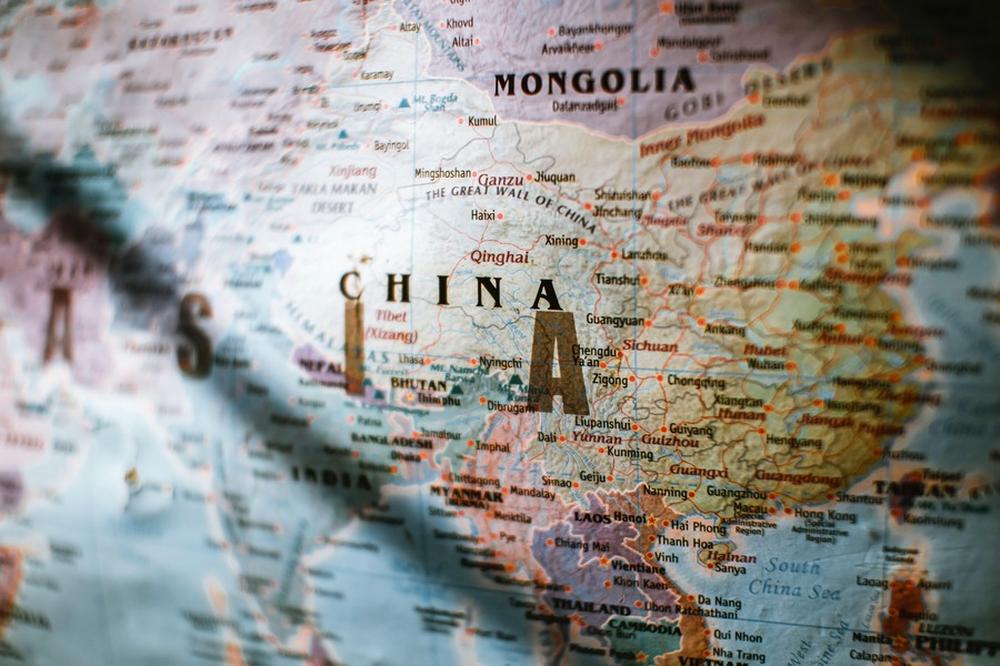- #China
- #Global Issues
- #US Foreign Policy

► The security architecture is once again on the verge of being reconfigured in Asia with an emerging system of bilateral alliances with the United States at the center, reinforced by a number of minilateralisms and intensified political relations by China, Russia, North Korea, and even Iran.
► The U.S.-centered security architecture has changed dramatically from the bilateral, alliance-centric form. In the Biden administration, the Indo-Pacific architecture could be said to be "almost complete" characterized by five key features. 1) minilateralism has been strengthened by QUAD and AUKUS, 2) the U.S. seems to have high expectations for Japan's increased security efforts and the active involvement of the U.K. as an extraterritorial power, 3) it is developing its security and economic relations with Taiwan in a dignified manner, 4) the government has been working with other countries to promote economic security, and 5) the administration has made clear its policy of not limiting its partners to countries with which it shares political values.
► Closer relations between Russia and North Korea can be seen as an extremely significant change that will take place in 2023, yet the three countries including China do not currently have strong ties as a triangle, as China has not taken steps to strengthen ties with Russia and North Korea substantially.
► What is needed is an even tighter network of partnerships among countries that want to help stabilize the current international order, necessity to push to ensure that it is fully based on a free trade perspective that also benefits the countries of the region, and diplomatic efforts to ensure that the countries of the Global South are not attracted to the discourses and support of authoritarian states.
In Asia, the security architecture is once again on the verge of being reconfigured. Whether we speak of the Indo-Pacific or the region stretching from eastern Eurasia to the western Pacific, what is emerging is a system of bilateral alliances with the United States at the center, reinforced by a number of minilateralisms and intensified political relations by China, Russia, North Korea, and even Iran. Perhaps incremental, but significant changes have been taking place in the region.
The U.S.-centered security architecture has changed dramatically from the bilateral, alliance-centric form once shaped by Secretary of State Dulles, who was known as an alliance maniac. As Kent Calder describes the San Francisco system, the Asian architecture cemented during the Cold War combined U.S. alliances with a focus on Japan. Unlike in Europe, the United States was able to exert strong influence over various countries as a result of its focus on bilateral alliances, although the reasons for this have been variously noted. The so-called hub and spokes of the bilateral alliance is based on the alliance between the United States and Japan, Australia, New Zealand, Korea, the Republic of China, the Philippines, and Thailand (New Zealand and the Republic of China have departed from this framework for their own reasons and have developed unique relationships with the United States.).
The idea of complicating these alliances was first proposed by U.S. officials 20 years ago. This led to the creation of the tripartite talks, which brought together allies such as the Japan-U.S.-Australia Foreign Ministers' Meeting and TCOG (Japan-U.S.-Korea), and the Japan-U.S.-India military cooperation, which included India, a non-allied country. It was also during this period that the U.S. and Japan began to form more security partnerships that were not alliances. This was referred to as "casting a net" or "strengthening the network". Although the idea had been in the works during the Republican administration, it was strongly pushed by the Obama administration and was an important part of the Asia pivot.
In the Biden administration, the Indo-Pacific architecture could be said to be "almost complete" in the eyes of the United States, having inherited the ideas of the Obama administration in various ways. It is characterized by the following five key features. First, minilateralism (cooperation among a small number of countries) has been strengthened by QUAD, which consists of four countries - Japan, the United States, Australia, and India - and AUKUS, which was promoted at the initiative of the White House and consists of three countries - the United States, the United Kingdom, and Australia. This adds to existing trilateral cooperation frameworks, such as the US-Japan-Australia, and US-Japan-India frameworks. Second, the U.S. seems to have high expectations for Japan's increased security efforts and the active involvement of the U.K. as an extraterritorial power. It hopes that they will become the focal point of the new network.
Third, it is developing its security and economic relations with Taiwan in a dignified manner, not only because of Taiwan's political value and critical economic importance, but also because it recognizes the need to enhance Taiwan's ability to maintain stability across the Taiwan Strait. Fourth, recognizing that the barriers between economic security and traditional security are low, the government has been working with other countries to promote economic security. Part of this effort is the promotion of the Indo-Pacific Economic Framework (IPEF). Fifth, the administration has also made clear its policy of not limiting its partners to countries with which it shares political values. This is evidenced by its commitment to strong partnerships with India and Vietnam in the summer of 2023, and Jake Sullivan, Biden’s national security advisor, emphasizes the need for partnerships with strategic partners rather than with value systems in his recent Foreign Affairs article. The inevitability of partnerships is emphasized there.
In the absence of alliances, such network enhancements are loose security cooperation, often exploring joint technology development, arms trade, and the provision of equipment and training. In alliance-based trilateral cooperation, however, advanced cooperation in information sharing and external messaging is being explored, and some of it is beginning to be implemented. While the bilateral alliance remains the core of the regional security architecture, a future in which the partnership gradually gains substance and rises to the level of deterrence and response is emerging.
It should be noted, however, that against the backdrop of these developments, the U.S. is asking its allies and partners to share the burden and increase their defense efforts. Moreover, its economic security policy is limited in scope amid criticism of U.S. protectionism.
On the other hand, what about the strengthening of ties between authoritarian countries? Closer relations between Russia and North Korea can be seen as an extremely significant change that will take place in 2023. According to the South Korean National Intelligence Service, military cooperation between the two countries has become quite substantial, with North Korea providing a large amount of ammunition and Russia providing satellite technology. The three countries do not currently have strong ties as a triangle, as China has not taken steps to strengthen ties with Russia and North Korea substantially.
However, Russia, China, and Iran are behind three major events that are currently shaking up the world order: the Russia-Ukraine war, the US-China confrontation, and the uprisings in the Middle East. These are the three frontiers that strategists Jakub Grygiel and Mitchell Wess have long been concerned about, and as they test the power of the United States, the authoritarian powers are directly and indirectly testing whether the status quo can be changed and, moreover, whether it has resonance. Aside from what is happening in Ukraine and Israel, China has also acted in a provocative manner towards the Philippines in the South China Sea. Even at this point, the moves by the authoritarian powers are so in line with the strategic interests of each country that it is difficult to dismiss them as coincidences.
At the root of the problem is the lack of a consensus on security policy in the domestic politics of the United States, which is necessary for the exercise of power. We are left with the weakest America since the Cold War ended. Of course, an interventionist America is not desirable on all fronts. But an America that is not sufficiently engaged on all fronts is a trigger for instability. In addition, we are facing a presidential election in 2024, which could lead to even greater uncertainty in the future.
What is needed is, first of all, an even tighter network of partnerships among countries that want to help stabilize the current international order. This would send a strong message of increased cooperation in substantive security and diplomacy. Second, to ensure that such a framework can be sustained, it is necessary to push to ensure that it is fully based on a free trade perspective that also benefits the countries of the region. This has been inadequate because it has been led by the United States. Third, diplomatic efforts are needed to ensure that the countries of the Global South are not attracted to the discourses and support of authoritarian states.
Finally, the perspective of how to keep China in check would indeed be an important one. Unlike other authoritarian states, China often has to act more rationally because of its strategic interests. At present, it is largely because of their similar positioning in international politics that China is being pushed to strengthen its partnerships with other authoritarian states. Japan, the United States, and South Korea need to discover and explore that there is still room to co-operate strategically with China.
Ryo Sahashi is an Associate Professor of International Politics, University of Tokyo. He is concurrently Visiting Research Fellow at Institute of International Affairs, Seoul National University. He can be reached at sahashi@ioc.u-tokyo.ac.jp

